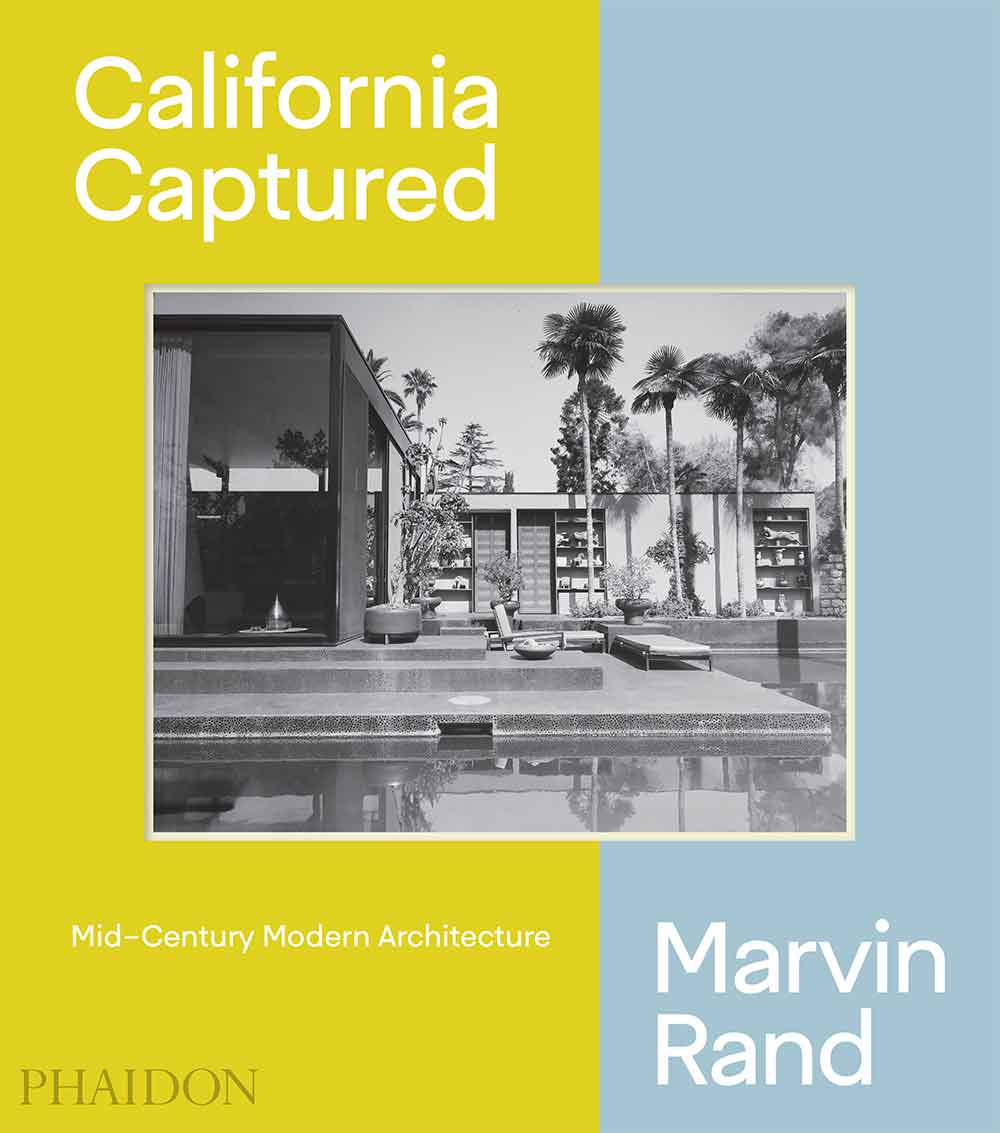California Captured: Mid-Century Modern Architecture, Marvin Rand
by Emily Bills, Sam Lubell, and Pierluigi Serraino ; photography by Marvin Rand

It’s
hard to believe that it’s been almost 10 years since the passing of Marvin
Rand—one of the founding members of SAH/SCC, a personal friend, and a tireless
photographic chronicler of architecture—past and present. It’s also astonishing
that, although Marvin published several monographic works on architects—Craig Ellwood
(2002), Greene & Greene (2005), and Irving Gill (2006)—this is the first book
dedicated to his archive of work on California. I’m considering this Volume 1
(more on that later).
The biographical text charts
Marvin’s early influences (left-leaning multi-ethnic Boyle Heights), education
(mentor Alvin Lustig and classmate Lou Danziger), and early career in his
creative agency (advertising for General Lighting, annual reports for Welton
Becket & Associates, covers forArts
& Architecture). But it was meeting architectural historian and writer Esther
McCoy in the early 1950s that changed everything for him. McCoy convinced
Marvin (I just can’t use “Rand”) to commit to an architectural focus.
Marvin’s successful publishing
history and long-term relationship with seminal architects may surprise even
the most-aware fan of mid-century architecture, as the realm was dominated by Julius
Shulman, about whom both Lubell and Serraino
have written books.” Curiously, Julius is mentioned only twice in the entire book, and his absence
is conspicuous, particularly as Marvin’s work is referred to as
“underrepresented” and “a virtually unknown treasure.” The first mention is a
recollection from SAH/SCC Life Member John Reed, AIA, of seeing Marvin working
in Julius’ darkroom; the authors state the nature of the relationship between
the two was unknown to family and friends and not acknowledged in the Rand
archives. Curiouser. In the essay after the portfolio of works, the authors
address how differently each photographer regarded his public image and legacy.
Pointedly, the authors describe Marvin’s photographic approach as “grounded in
a strong graphic composition, a focus on structure over lifestyle.” They are
implicitly comparing the two photographers.
Ah, the portfolio! It’s filled with
sumptuous black-and-white photographs showing Marvin’s graphics background
through shadow and pattern, along with unexpected and artistic viewpoints of familiar
structures, such as LACMA (Pereira, 1965), Capitol Records (Becket, 1956), and
the Salk Institute (Kahn, 1963). There is intimacy in the 300,000-square-foot Stanford
Medical Center (Stone, 1959) and majesty at the neighborhood Tiny Naylors
(Honnold, 1949).
Why Volume 1? The Marvin I knew was,
as described, “ever curious.” He was quick to adopt digital technology (in his
mid-70s!) and kept up with young architects and designers, who actively sought
him out late into his career. “He has only so many photos left in him,”
designer Michele Saee told me, “and I want as many to be of my work as
possible.” There is much more to see of Marvin’s California—as well as his view
of the rest of the world. I eagerly await Volume 2.
Phaidon; 2018; 240
pages; hardcover; $59.95.
|